Welcome back friends! A few really juicy updates this week. First, here’s the (updated) current status of 0.11’s development, where BLUE denotes something finished and GREEN denotes something currently being worked on:
ITEM INTERACTIONS
- You can drop items
- You can pick items up
- You can use items (whatever that means for the item in question)
- You can throw items
- You can destroy items (very rarely an item might have something hidden inside it…!)
- You can show items (e.g. to someone else)
RELIGIONS
- Generate the images for all 25+ archetypes of religious relics, and place them in religious buildings
- Update and transform things like religious beliefs, things religions dislike, information about religious histories, holy books, etc
- Enable the player to join and leave a religion
- Far more complex interactions with priests etc
- Develop proper model for “membership” in religions, nations, cults, etc
TREASURE MAPS
- Treasure maps spawn in shops just like non-treasure maps do
- Zoomed-out treasure maps correctly show relevant locations
- Zoomed-in treasure maps correctly show relevant locations (far more complex)
- High-value items are, indeed, under the ground where a map points!
- Riddle treasure maps exist and are logically generated, and solvable
OTHER STUFF
- Implement procedurally generated statues of many types
- Implement aging, death, diseases, health, statuses
- Implement weather and phases of the moon
- Upgrade speech generation and conversation system
MORE OPTMIZATIONS / BUG FIXING / POLISHING
- Purge all known bugs (current count: 186 resolved)
- Further speed up map generation
- Further speed up turn-by-turn rendering
- Try to speed up world generation as well?
Relics
Religious relics are now finished, and integrated into the game! This has been a big task, but they’re looking interesting and striking throughout the game world, and can now begin to take their place as a major potential element for quests and riddles and the like, a key element of worldbuilding, and potentially more besides. There were many stages to this in the last few weeks…
…the first of which involved adding a final three new relic archetypes to the overall database. Whereas some relic archetypes can only appear for certain kinds of gods, these three are viable for all deities of the “normal” type – i.e. not a pantheon, a Lovecraftian god, a demonic god, or an animal god – and again I’m very pleased with how all three of these came out. On the left we have lantern-type religious relics, which come with names like “[Name]’s Lantern of Wisdom” or “[Name]’s Beacon of Death” (as ever the names here will be a cultural rather than a religious thing, so we continue to get interaction and overlap between these various elements of the game world). This archetype has relatively few variations (only 150!) but as with all relics there is a cap on how many can be generated of a certain type – and this varies across types – so the player is always going to see a maximum of 5 very distinct ones within the game world (i.e. very different shapes and sizes). In the middle we have plate-type religious relics – “plate” as in a sheet of metal with something on it, not “plate” as in culinary use – with names generating along the lines of “The Golden Plate of Destiny” or “The Bronze Plate of the Sky”. This archetype has so many possibilities I genuinely cannot count them, as it contains the religious symbol for the religion it belongs to (a rarity amongst the game’s relics), but the number is certainly comfortably into the billions. On the right-hand side we have relics that are broken or shattered pieces of holy wooden objects (inspired here by all the relics that claim IRL to be a part of the “true cross”) and generates with names like “The Shard of [Name]’s Consecrated Shield”, or “The Fragment of [Name]’s Blessed Chair”, and so on. These have exactly 414,720 permutations. Again, very happy with how these all look!
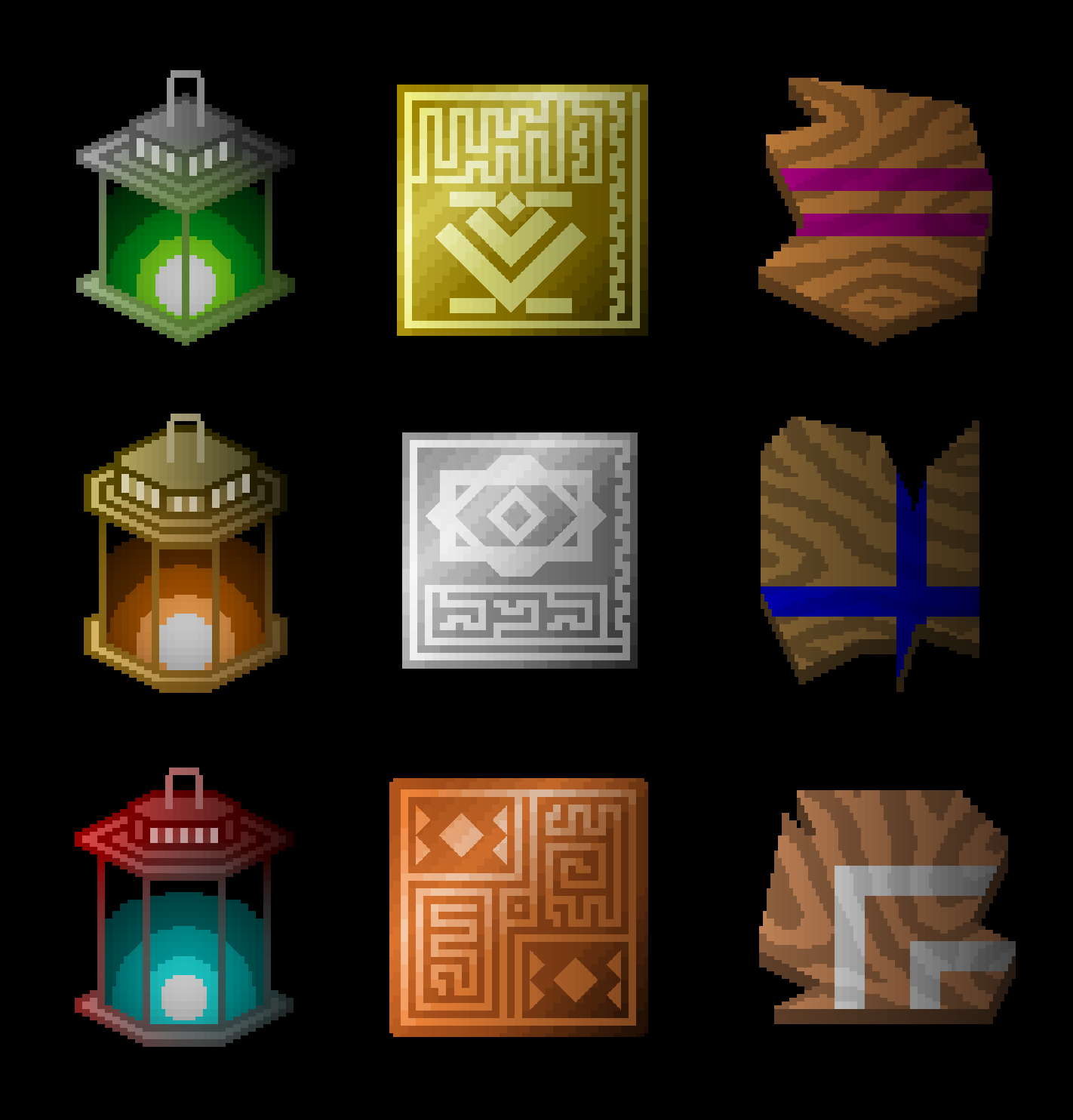
I also returned to a few existing relic archetypes which weren’t yet yielding quite the level of variety that I wanted – specifically, the “fan”, “crystal”, and “eyeball” archetypes, all of which needed just a little bit more oomph to bring them in line, quality-wise and variation-wise, with the rest of the relics. So an illustrative set of three relics from each of these archetypes might now look something like this:
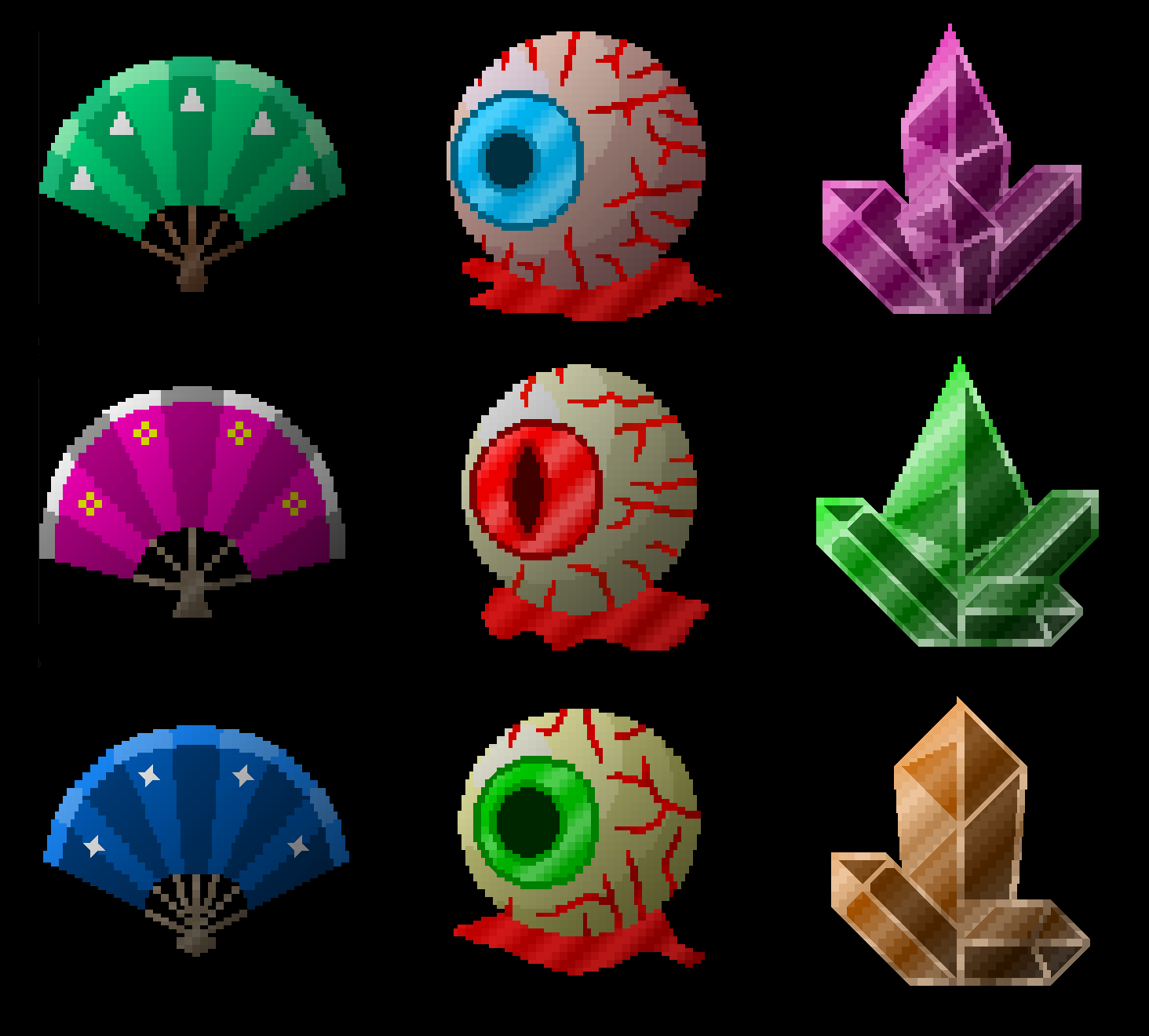
I’ve also actually removed the “skull” archetype from the relics, and I’m instead going to use it alongside other bones for whenever we get to generating bodies, bones, things of this sort. It just didn’t look as good as any of the other relic archetypes I’ve developed for 0.11, so it had to go.
Anyway, with those changes done, we then had two relic types only suitable for demonic gods (hellraiser-style boxes and weird demonic glyphs), two for Lovecraftian gods (eyeballs and weird shapes), two for animal gods (pyramids and ankh-like symbols), three for pantheon gods (sand jars and coloured necklaces), and then fourteen for “normal”-type gods (everything else). There are never more than two gods from each of the unusual types generated within a given world (and normally averages around 1), and the absolute highest number possible of religions that have relics is 16 (roughly a 1/10,000 chance of being that high – it’s normally between 10 and 14), and there are always at least two non-“normal” gods within the game world… and so no matter what the generator throws out, we will now always be able to assign a relic type to every single religion, no matter what types of religions are generated or how many religions are produced.
The next stage, then, was to get to assigning relic types to religions. The game checks what type the religion is and then picks a type from the relevant list, and this will also be incorporated later into the writing of holy books, prayers, rituals, things of this sort. With that done, we then needed to create the “Relic” as an item class in the game, and to add everything that needs to be associated with it, e.g. when you hold it up and show someone, or try to sell it to someone, or throw it, and so forth. One really nice detail here is that the game will actually pay attention to the nature of a religious relic when you’re using it or doing something with it – so throwing something “fragile” to the ground will, indeed, permanently destroy the relic, while throwing something hard to the ground will just have it land. Relic types also have different weights and sizes, and I even added variation for what happens if you show someone different sorts of relics – showing a believer their own relic will of course elicit a rapturous response, but showing a non-believer a wooden shard, vs showing a non-believer a bloodied eyeball, will elicit quite different responses. Some relics also have special custom sentences for when various things happen to them, e.g. throwing an eyeball on the ground doesn’t yield quite the same sentence as throwing a mirror, even if they are indeed both destroyed by the impact.
With that done we then needed to get relics correctly assigned to places. The game therefore now, after generating all religions, religious buildings, monasteries, and so on, makes a list of them in order to discover how many possible “normal” locations, i.e. one relic per religious building, this religion might be able to accommodate. This also includes the cathedral for the religion, wherever that might be based. It then also, however, takes note of other locations where a relic might be, for instance, and will sometimes decide that a relic is lost / buried, or perhaps with a private collector, or perhaps in the museum or gallery in a foreign nation, or perhaps on a shipwreck, or perhaps carried by an elite member of a military force, or any number of other possible locations. Some of these of course do not currently generate (e.g. the shipwreck) but some of them do, and the game now tracks where all the relics are and will enable priests and monks and the like to tell you information about missing relics. I think a good “default” quest for all religions might be recovering their full relic set – it’ll be something very clear and obvious for the player (not all quests need to be cryptic in their setting, even if their solving might be plenty puzzling) and a good way to develop a relationship with a religion and get the associated rewards – but the missing relics might also be part of other riddles, other quests, and there might be others who will reward you for reducing the number of relics a religion has at home, and so forth…
Additionally, each relic type has a maximum number that can be generated. This normally doesn’t have too much of a relationship to the number of possible permutations per se in that relic type, as these are generally at least in the tens of thousands and sometimes in the billions, but rather refer to the number of highly distinct ones that can generate in a given world. By this I mean that when a first relic in a type is generated, no relics that share too many details with that first generated relic can then be generated. Then when the second relic is generated all the details of that one are added to the “do not generate similar again” pool for that archetype, and so on and so forth until all relics are created. From a game design point of view I think this ensuring of difference is a really interesting metric – and long-term readers will know this is something I build into a lot of system – so here are the current maximum relic numbers for each relic type. Some of these might, indeed, get expanded in the future, but for now these are the largest numbers you can get for each type. A religion might not have up to that full number, of course, if they have very few locations a relic can actually appear, but if they have dozens of religious buildings and one of the higher-number relic types, you should certainly expect to see quite a large number being generated in the game world.
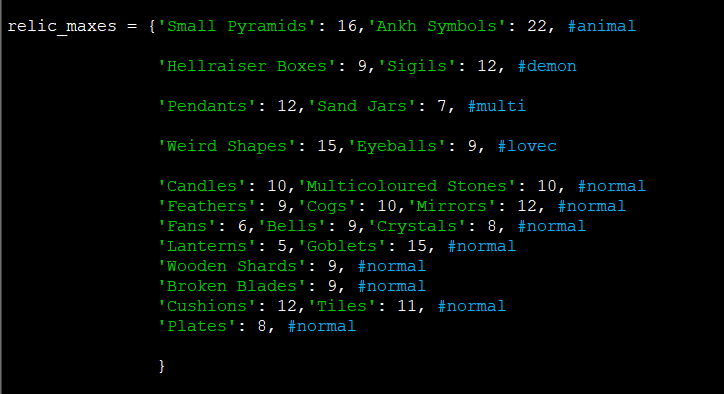
As such, you can now see relics in the game! This is a huge step and the culmination of about a year’s work on these, on and off, and I absolutely love how they look. Here are some examples I found in a few worlds:
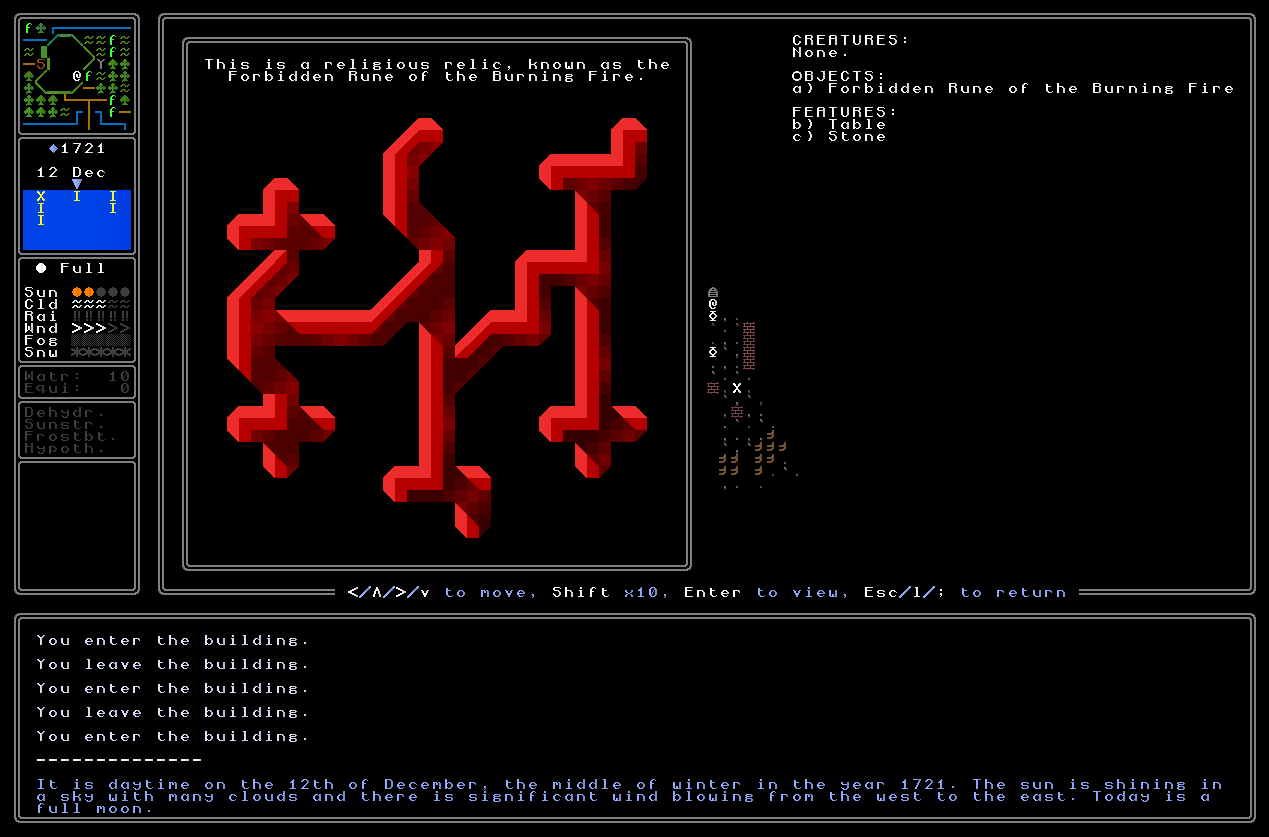
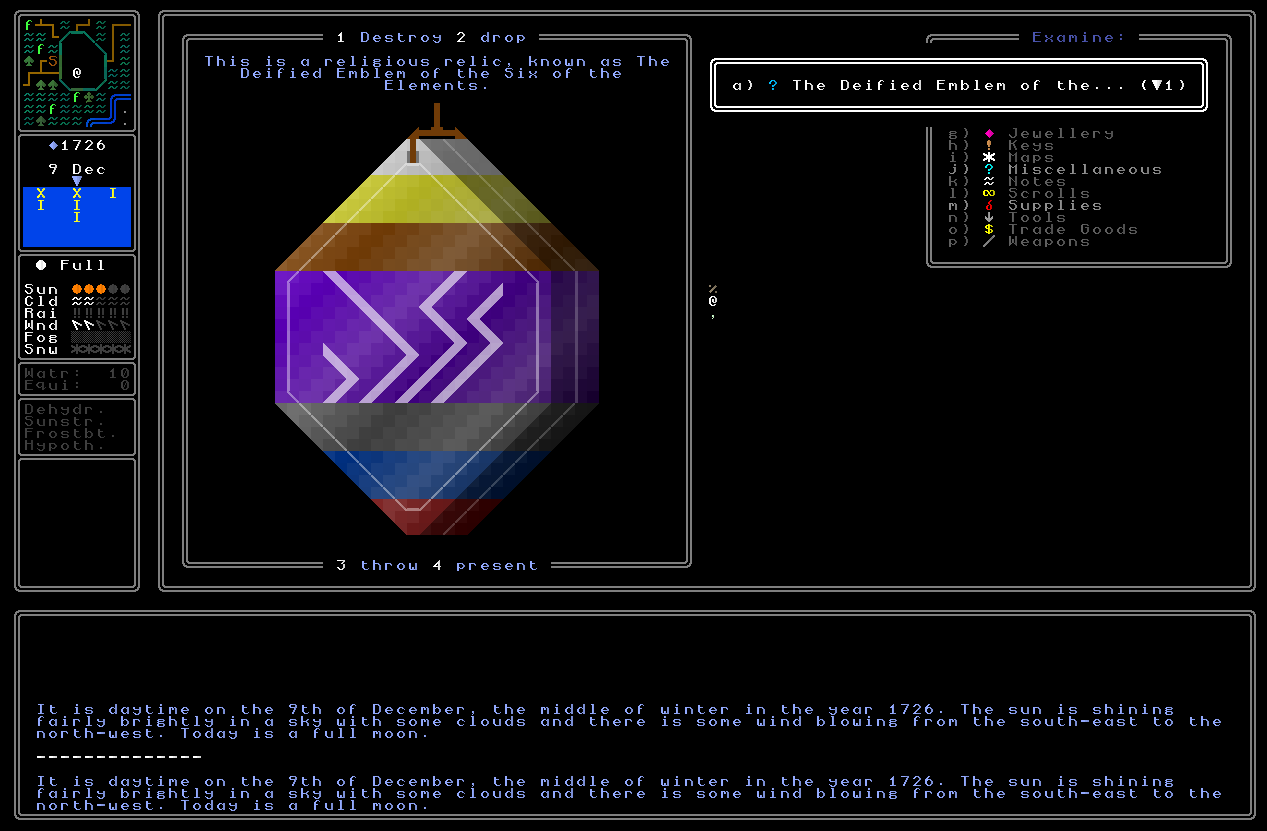
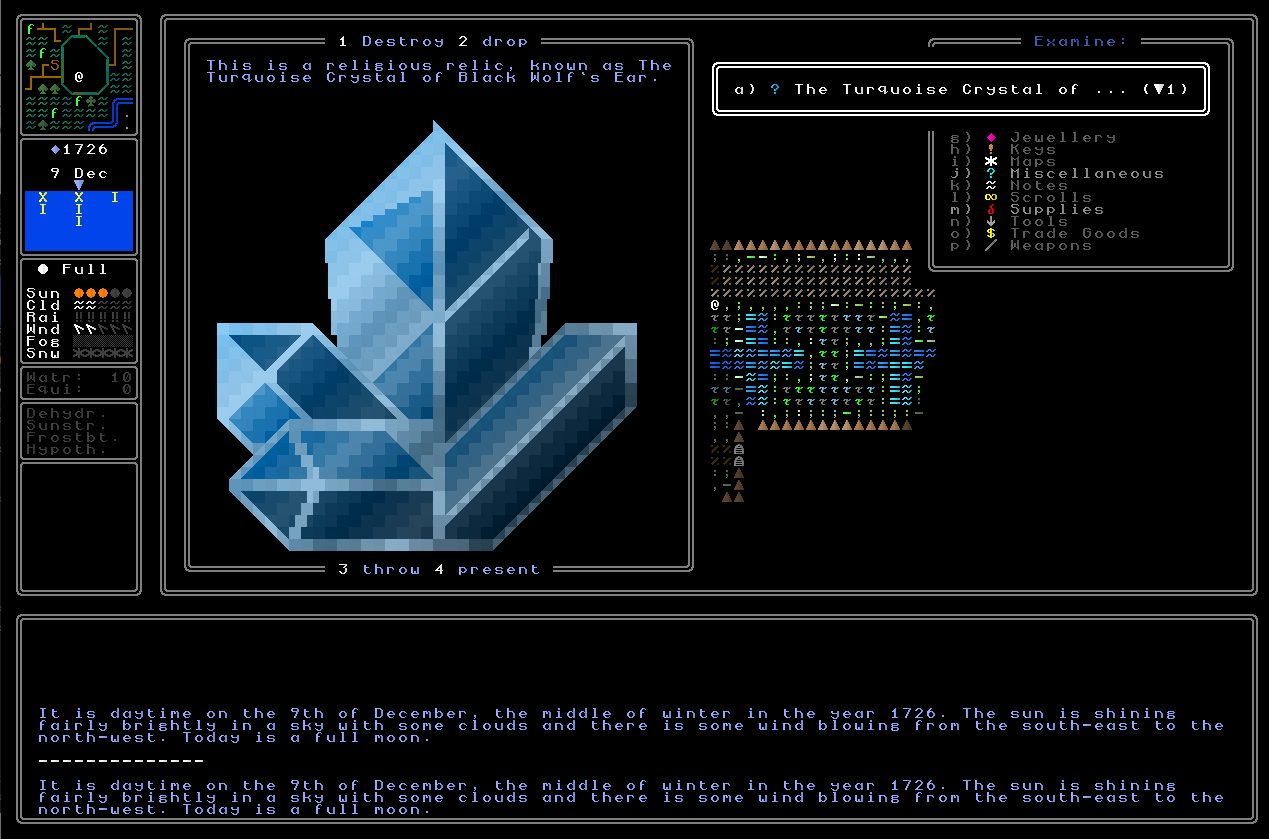
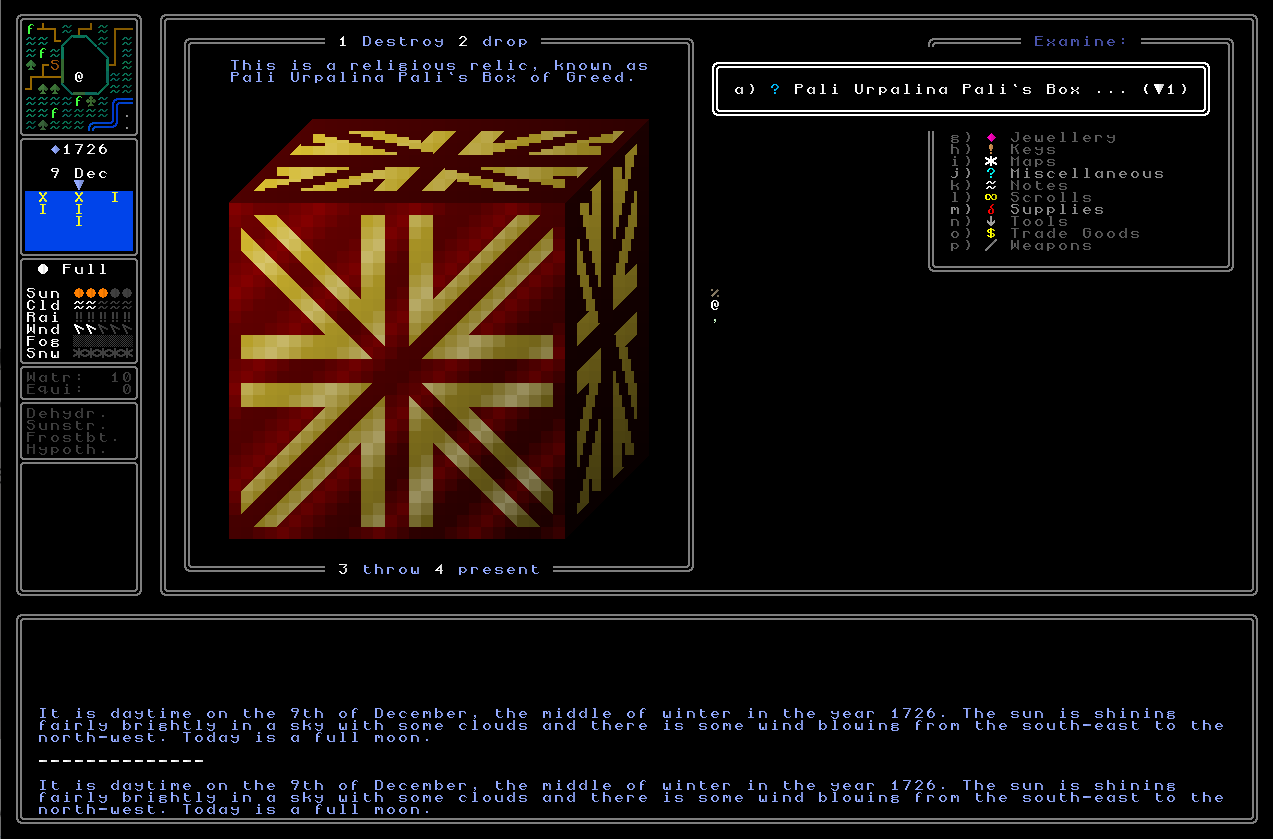
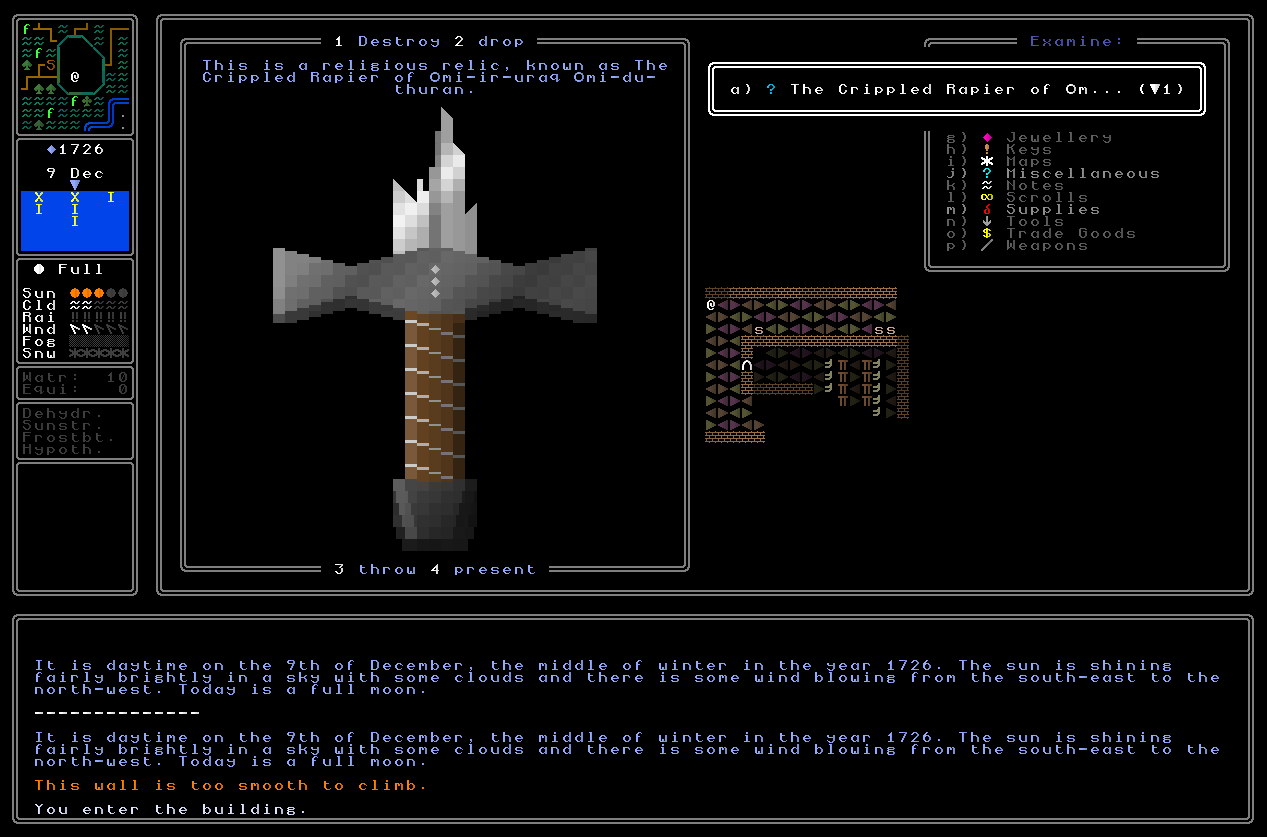
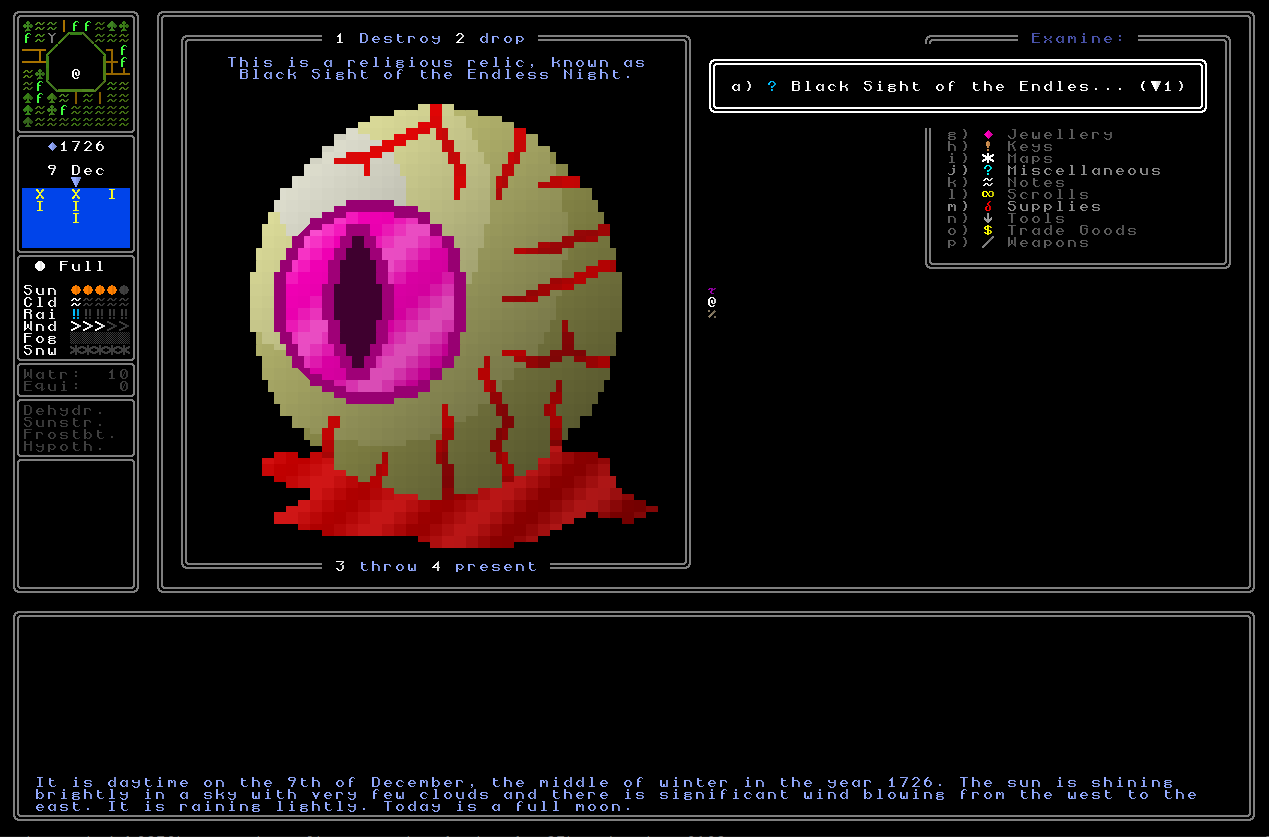
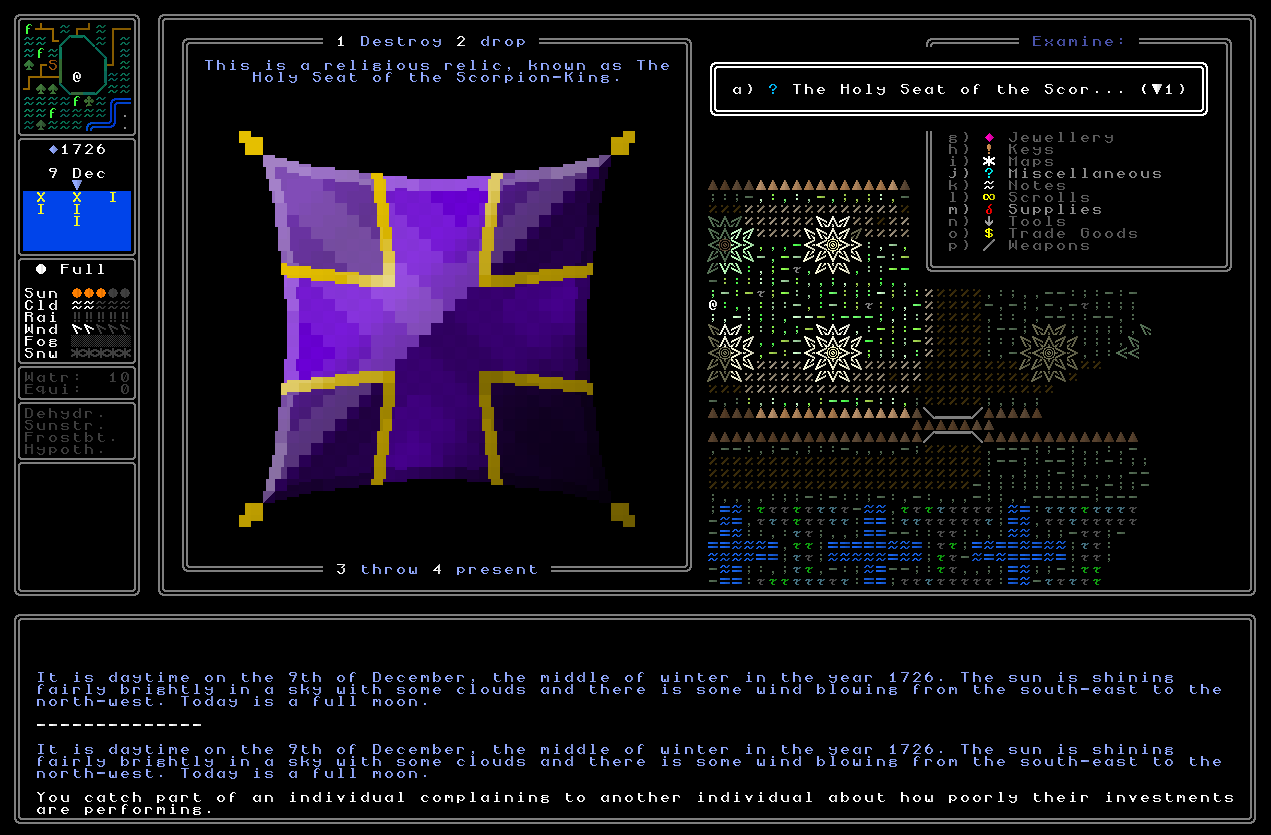
The names of relics are, of course, meaningful – so the first one is talking about the specific set of deities this pendant represents, the second one will have a specific history relating to this person who presumably had some importance or influence in that religion’s history, ditto the third, ditto the fourth (this will have been a weapon this person presumably wielded in some great battle where it was destroyed), the fifth will have some strange history that connects to the specific words chosen in the name, the sixth will relate to someone very holy and important within the religion in question… and so on and so forth for all the different relic archetypes (only a handful being shown here). You might also of course find clues that reference the specific content of a name, so you might find a riddle with a clue that talks about a relic belonging to a historical religious figure who did X or Y, and only once you find the name of that person can it be matched to the relic. Other names will reference passages in their holy books, which will then in turn reference other things such as secrets of that religion (perhaps “unlocked” by the right relic?), and so on and so forth…
Elite forces
Another inch towards 0.12’s combat focus has also come into being. All nations – which are not pacifist nations – now generate a set of unique elite armed forces, with names and fighting styles and information. Each nation picks a unique name type, which is selected based on the culture and politics and religion of the civilization in question, and then generates between 1 and 5 elite forces for that name type. The number is not randomly selected, with for instance Imperialist nations generally having the full five elite forces, while nations that are far less military might have only one elite force. For each elite force the troops within it have a primary weapon, a secondary weapon type (or none), a type of armour (heavy, medium, light – only heavy exists in the game right now, but we’ll be coming back to that in 0.12!), and whether they have anything “additional”. Right now the additional part is generally nothing, but can sometimes include the use of grenades, or the use of throwing weapons. I’m trying to think of others, so if anything comes to mind, chuck it in the comments! But yes, the idea here is that these elite forces will have very identifiable and clear styles of combat one can very much prepare to fight (if so inclined).
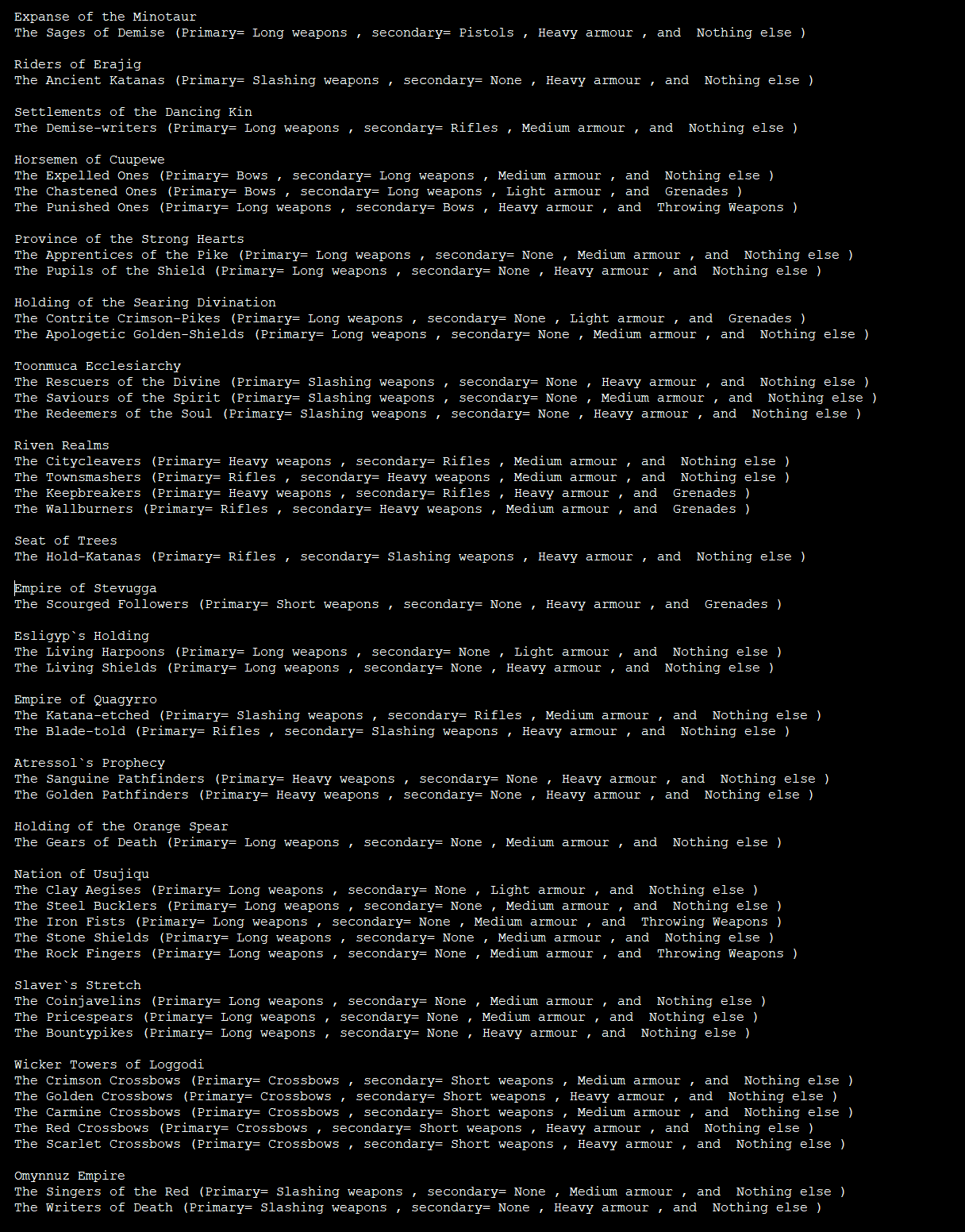
So, here’s ^ a debug list of stuff showing in each case the name of the civilization, and then the names of the elite forces, and their equipment. I do want to add in the possibility for some rare / unique permutations which perhaps only appear in a single elite force in the whole game – e.g. a dual-wielding short weapons group, a dual-wielding one-short and one-slashing weapon group, maybe even a bare-handed group, and so on – but for now I’d say these are pretty indicative. Where there are multiple groups that appear to be essentially the same, further variation will be secured by varying what exact weapons they use – e.g. two using “Slashing Weapons” might be using katanas or longswords, for example, or two using bows might use different sorts of bows or different kinds of arrows – and also in the fighting styles that they tend to use, and even information about their training which might help the player to “read” their incoming attacks (more on these ideas later!). Across weapon types, armour types, and possible additions, there should be a really good amount of variation here in these elite forces.
Weapons, Shields
NPCs now have weapons and shields! Implementing these elite squads is going to be probably something in 0.12, so for now, therefore, all soldiers and the like are understood by the game as being not part of any of the elite forces of their nation in question, and will use the general weapon preferences and armour preferences and so forth of their nation. Nevertheless this adds some nice new detail to the soldiers and mercenaries and the like one can encounter…
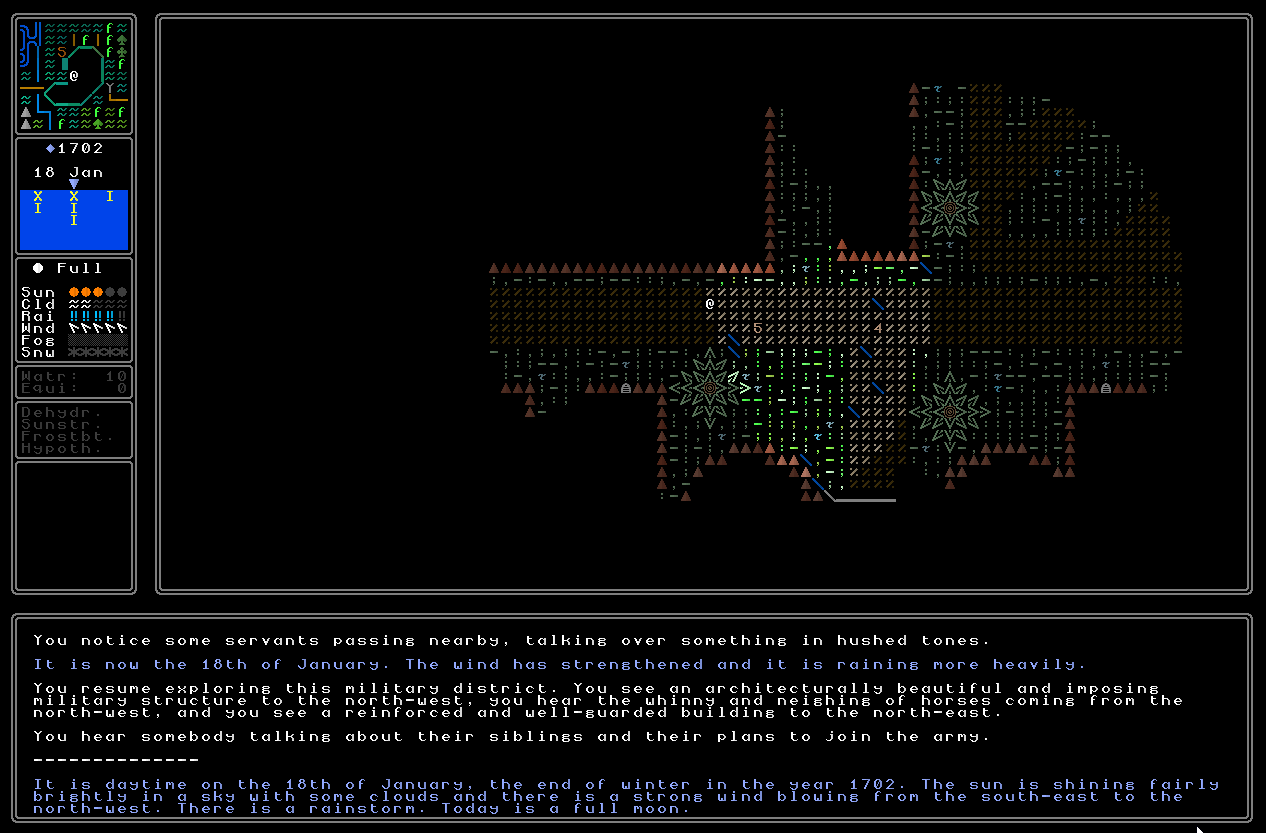
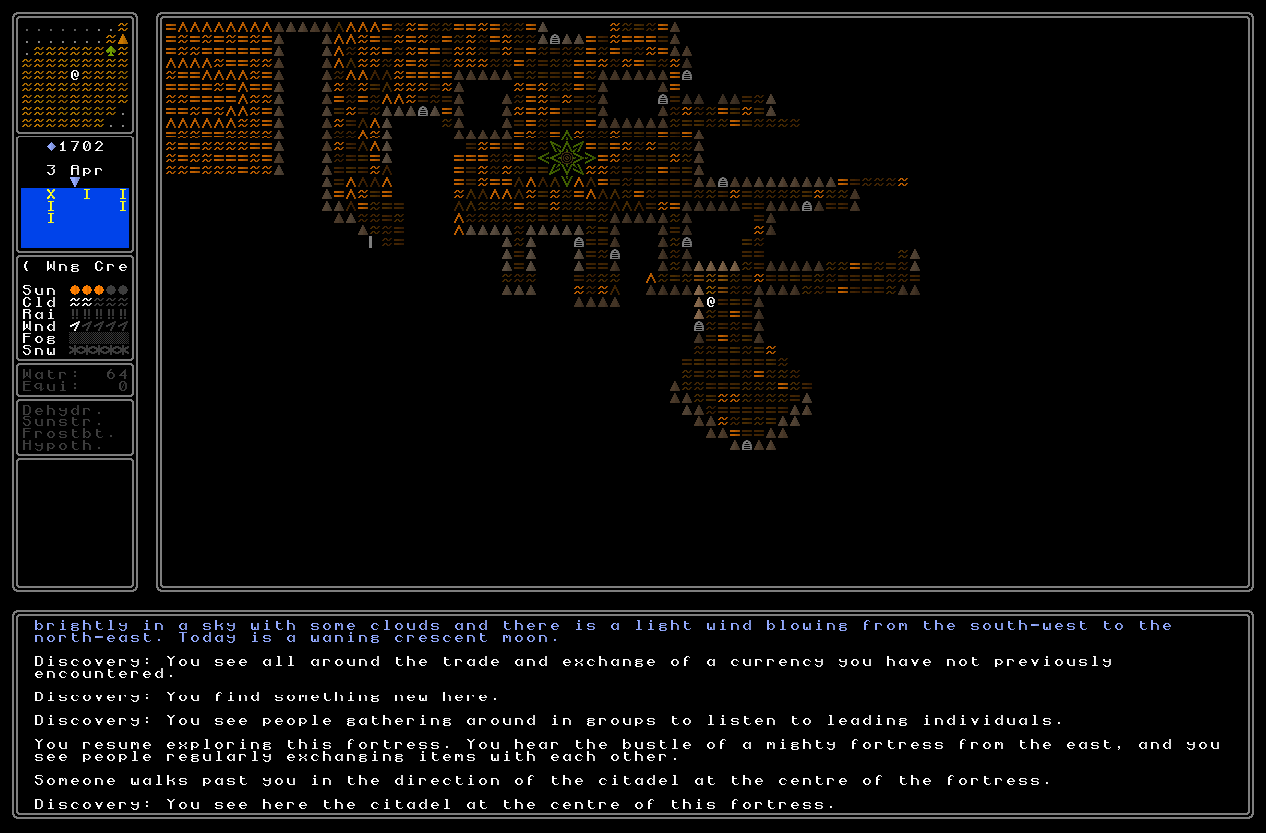
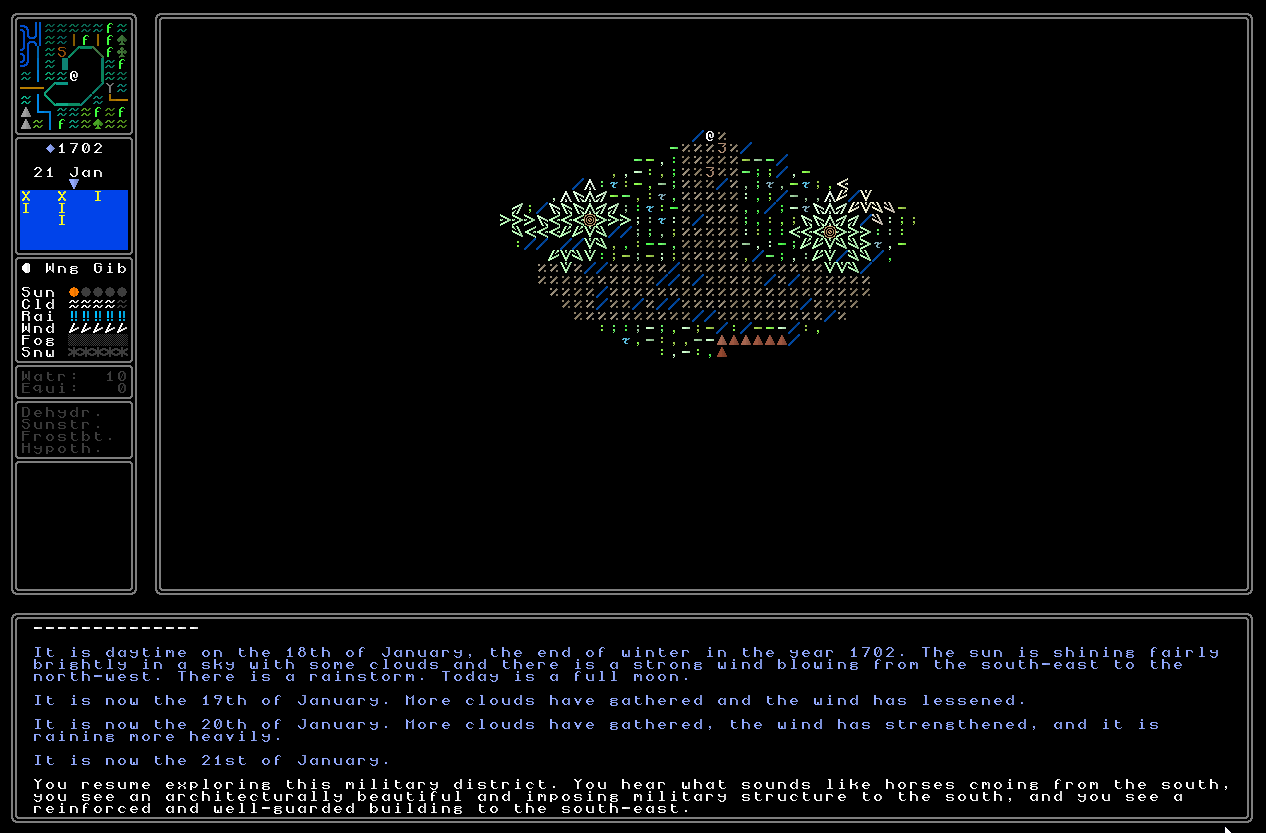
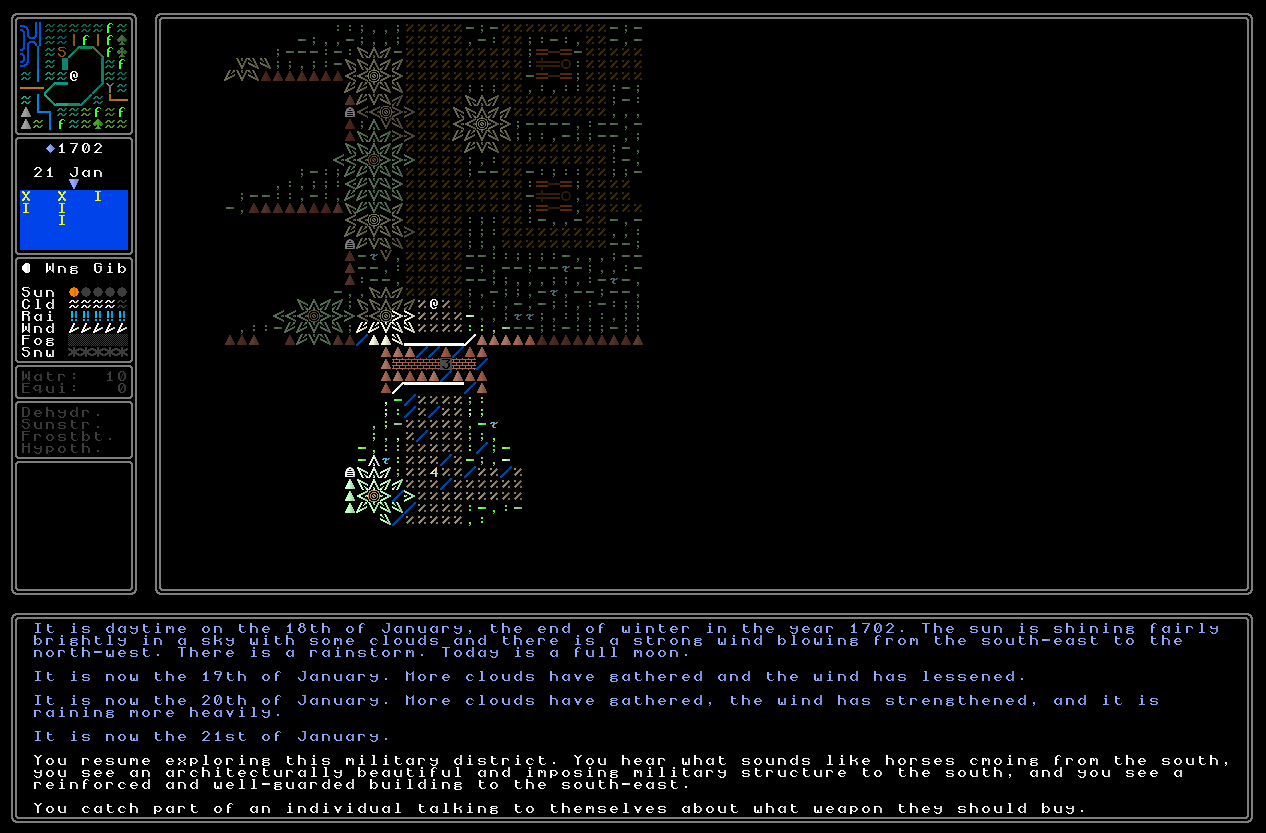
…and it’s exciting to think that it’s not too far in the future that they’ll actually be able to use them!
Clockwork
Up until now the “mechanical” intellectual policy / cultural choice for nations has led to the spawning of mining shops containing things like shovels, pickaxes, and the like. However, given how important these are going to be to exploring the world, I’ve made some changes – and some changes that have allowed me to implement a rather cool new civilizational thing to the world. So firstly, therefore, all nations can now spawn mining shops. Each city / town / fortress currently has roughly a 1/4 chance of spawning with a mining shop, and the player also now begins the game with a shovel and a pickaxe, too. This will make it far easier to access vital things, and also prevents the rare scenario where perhaps only a single nation has that policy, and so these essential interaction items become very hard to get. That’s now no longer the case, therefore, and mining items are no longer tied to policies.
The second change is the answer to the question “so what do we do with the mechanical choice?” The answer is that these are now going to be nations who have developed clockwork and machinery to a high degree, offering a new set of interesting pieces and elements the player will be able to interact with, get information from, get information about, throw objects at, and so forth. The first of these is that this civilization will now in some buildings have brazen heads as decorations. I think these look extremely cool – and again represent another use of the face generator I put so much time and effort into! – and will generally turn up in administrative or governmental buildings, but I think also sometimes in upper class houses, for example, and maybe some future buildings as well. We’ll see. Here’s what they look like…
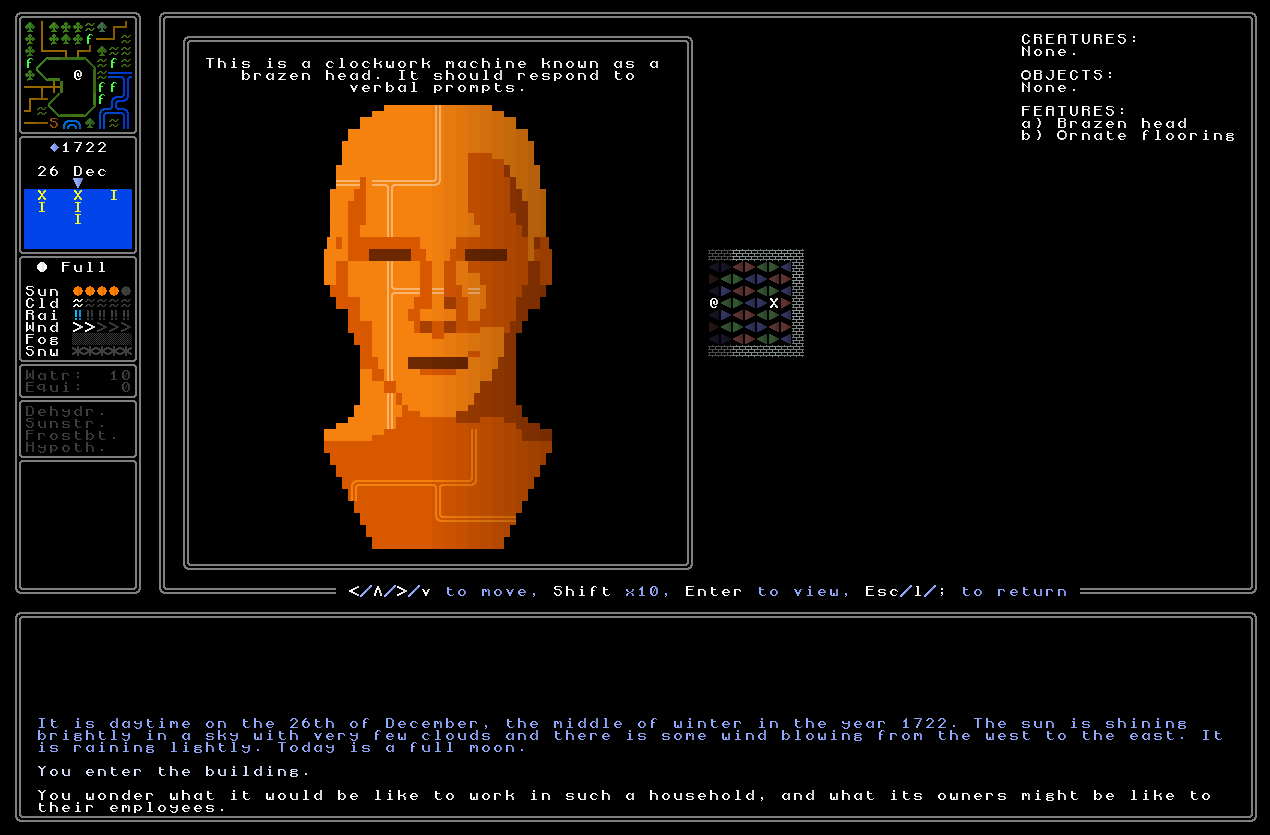
…and I have to say I love how they look! Adding the effect of the plates joining together was particularly fun to build in (and naturally this varies a lot) and I really like how it came out. Again, I always want to stick within the realm of physical possibility, but that’s no reason that slightly weirder or more outlandish things can’t be found here and there within the URR world. It’s so important I think to make each nation as different from the others as possible, and all these sorts of cultural choices that result in big differences are a fantastic way to do it. The brazen head was (apparently) a real thing, after all, so if we just imagine that it was slightly more sophisticated than it was in real life, we find ourselves with an interesting set of pieces that further enhance the variety of the world, the considerations that vary across the different nations, and so forth. I’m still working on precisely what function these clockwork machines will have within the nation in question, though I have some interesting ideas about puzzles involving the internal logic of the heads… but we’ll see. Regardless though, I do just like the idea of incorporating machinery and clockwork into these nations to a full degree, while again maintaining as close to realism as I can (even if a few technologies might be fairly advanced for the ambiguous 1500s-1800s era that URR is set in).
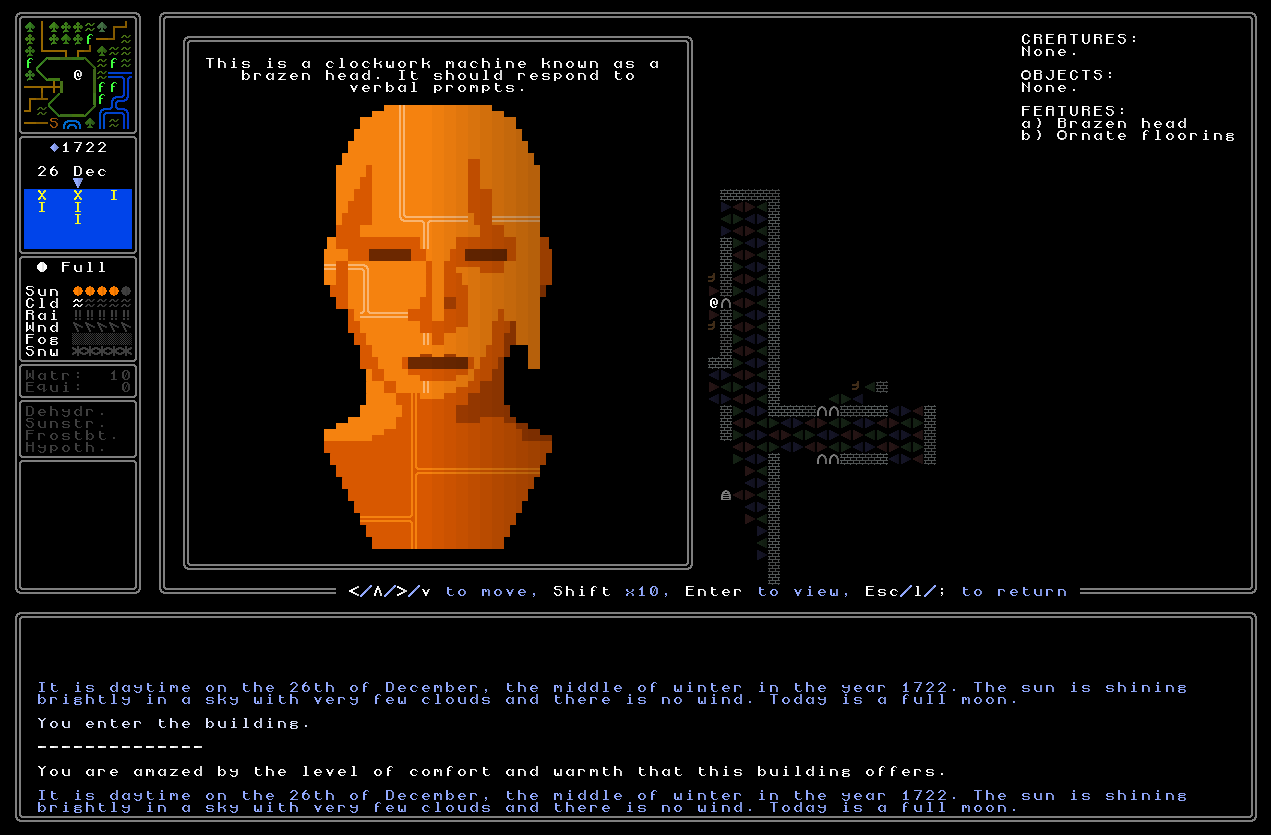
I also plan for clockwork to be an option for limb replacement, once we reach the point where limbs can be lost. It’s going to be a really interesting balance to strike between “battles and injuries can have serious consequences” vs “The right strategy for a player who has lost a limb should not be an automatic restart of the game”, and having replacement limbs – perhaps of varying quality, varying use, and so forth – will be one way to address that issue (as will things like being able to hire companions, mercenaries, and so on). I can imagine most nations having wooden replacement limbs that perhaps replace mobility to a certain small amount but not to any significant amount, while the more machinic ones are far more effective… but again, we’ll see how it all plays out. For the time being speaking to one of the brazen heads is just going to yield a set of error responses from the machine (haven’t implemented this yet, but will have shortly), but in the future I suspect there will be more interesting purposes we can find to put those to (I’m imagining systems where asking various questions can lead to interesting outcomes, or even one can attempt to short-circuit or evade the head’s logic, or something like this… more to follow!).
Time, hair, eyes, loading
A whole bunch of other stuff has also been implemented and can mostly be found in 0.10.2, although a few bits will be waiting until 0.11. I didn’t want to list this stuff in the previous update, which I wanted entirely focused on the riddle generation stuff, but now’s a good time to go over them. First I did a bit more work on the time mechanics discussed last time, and the game now notes when the player has a birthday:
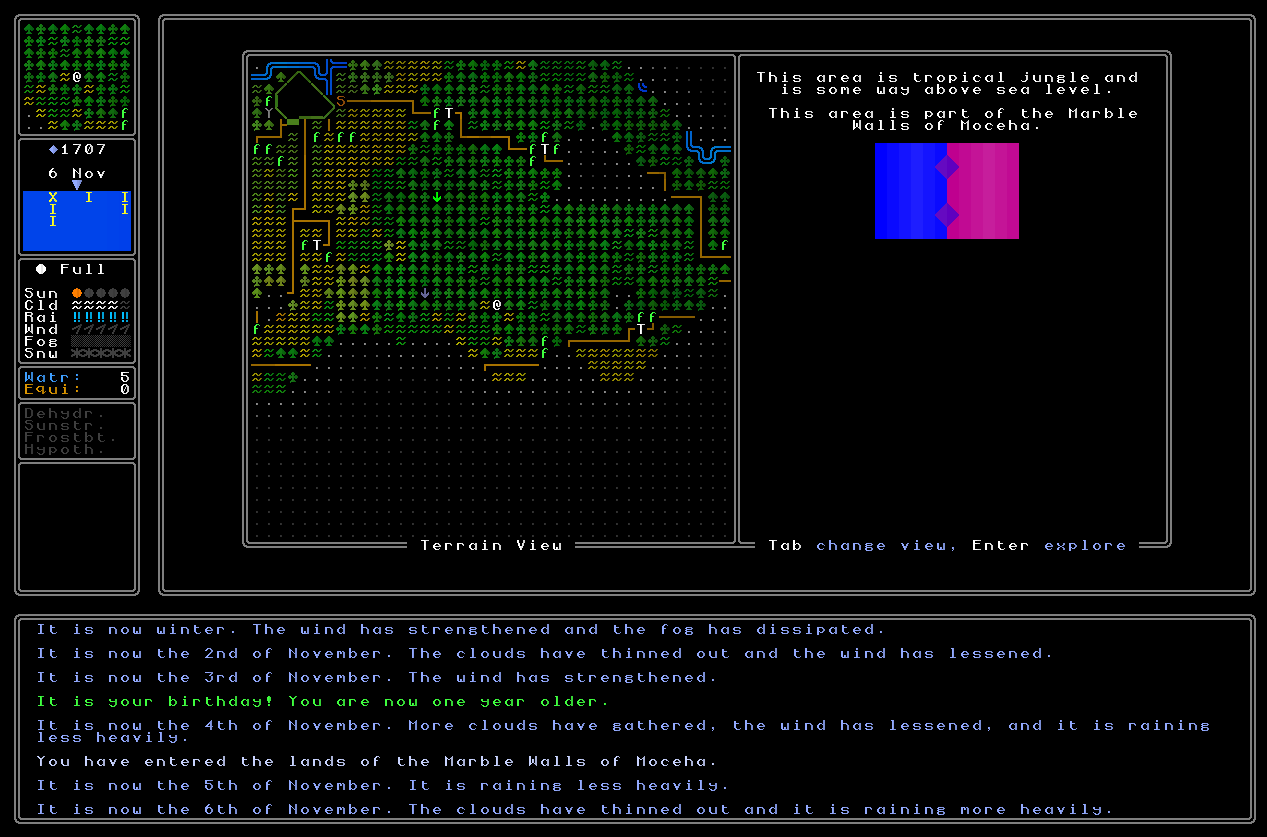
As well as amber, blue, green, brown and grey eyes, purple eyes can now generate and spread across the world genetically just as any of the other eye colours do. I decided to add these because more variation for these sorts of foundational visual things for in-game characters can only be a good thing, especially as we start to get quests and puzzles that require the identification of particular people or particular groups or demographics of people, and so on (as a side note, I do intend to add colour blindness accessibility in the future given that some of the game’s puzzles will rely on colour, but I haven’t implemented these yet). Here’s an example:
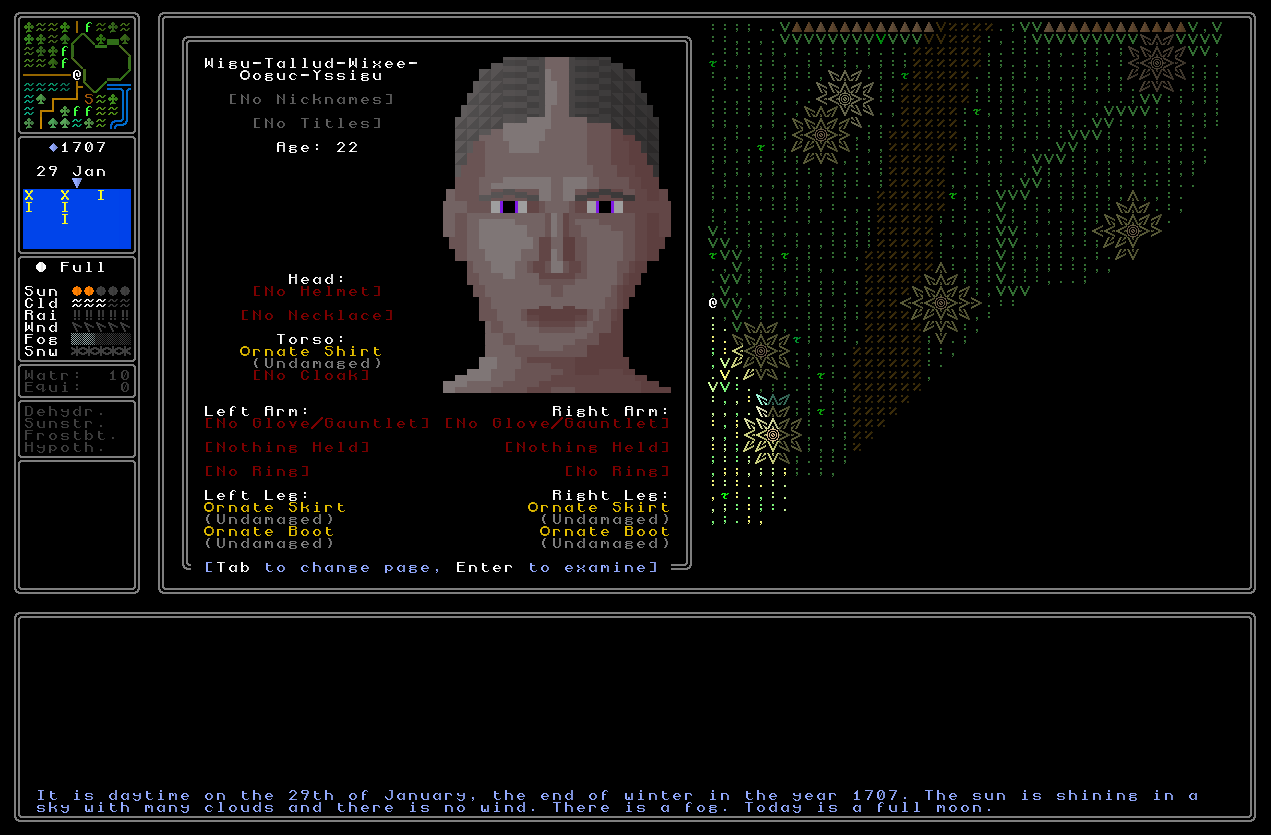
Blonde hair has also entered the game having been, bafflingly, absent until this point (please don’t comment on this bizarre omission which I honestly cannot explain, except as a reflection of some kind of dreadful mental degradation on my part), and looks like this:
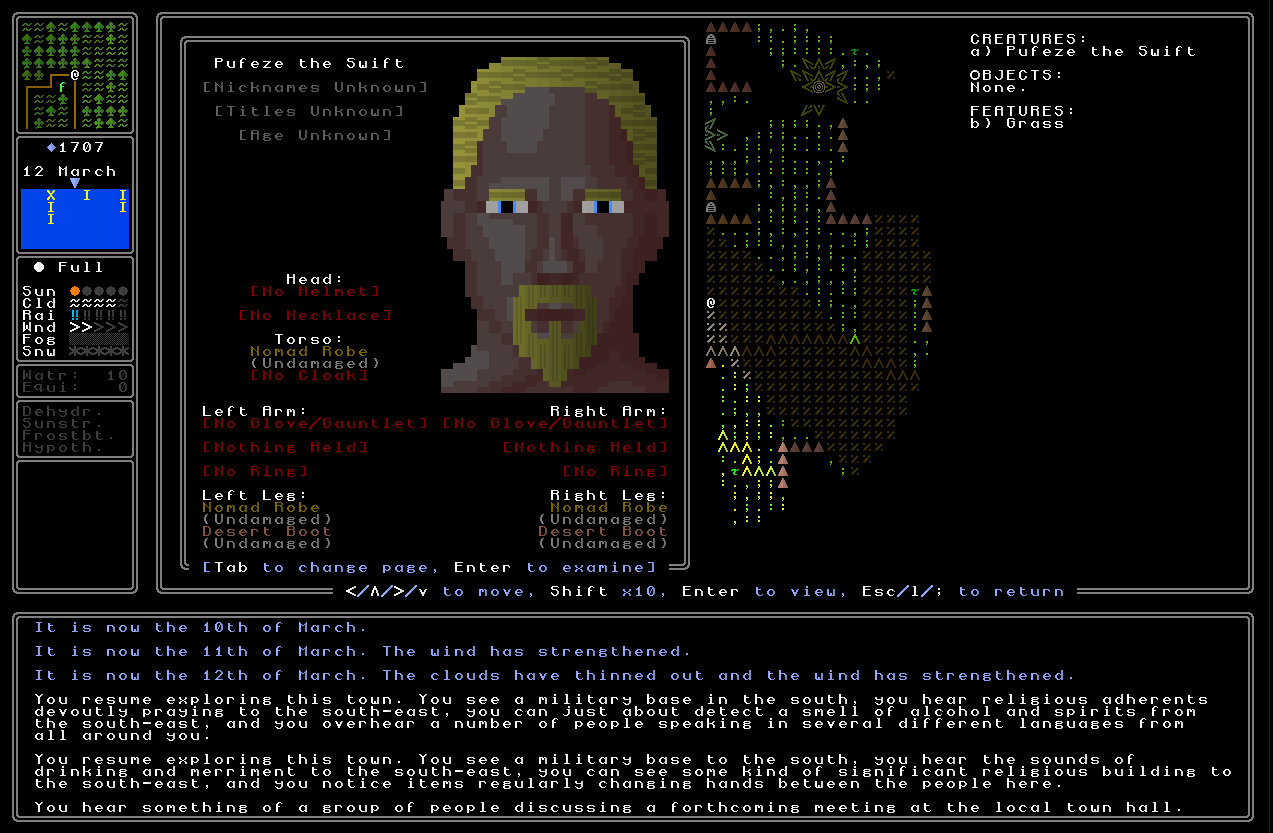
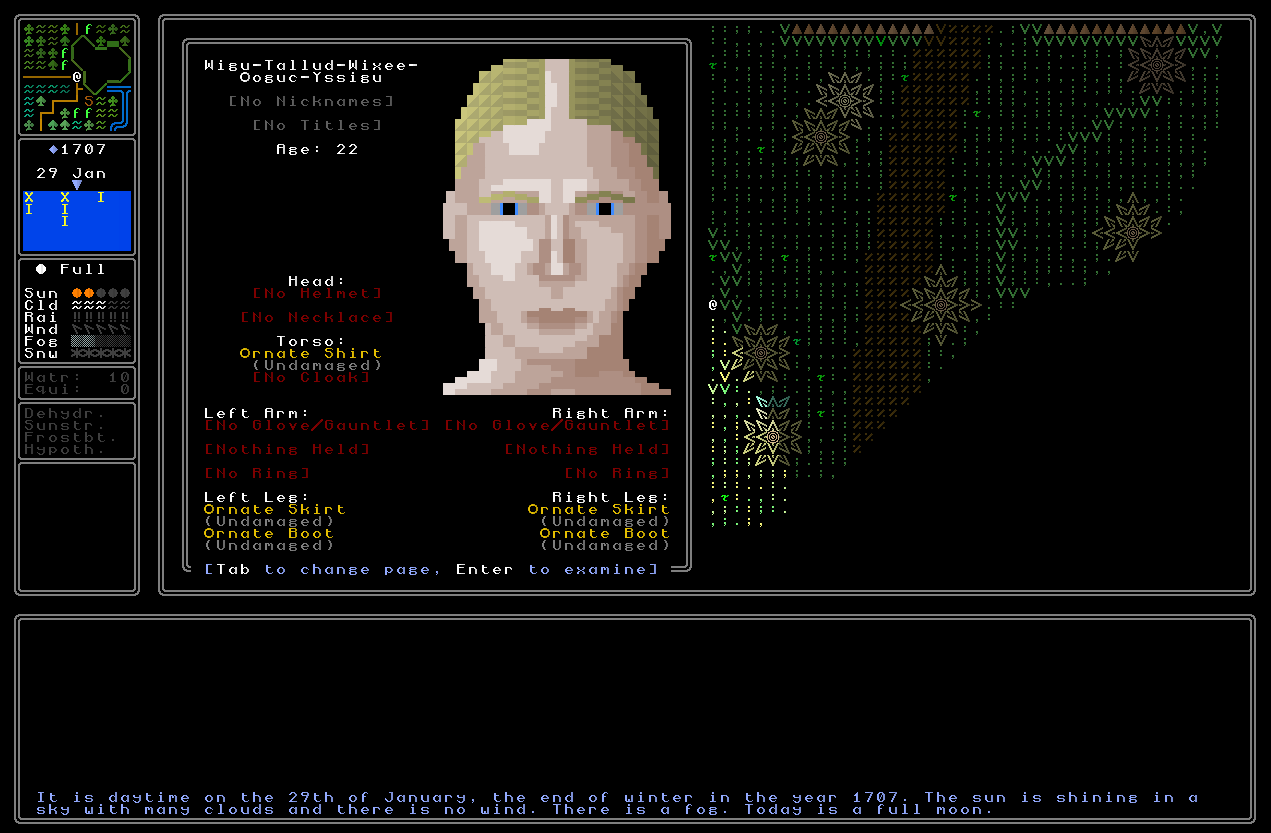
Also in the last few weeks I’ve updated the loading screen, from this…
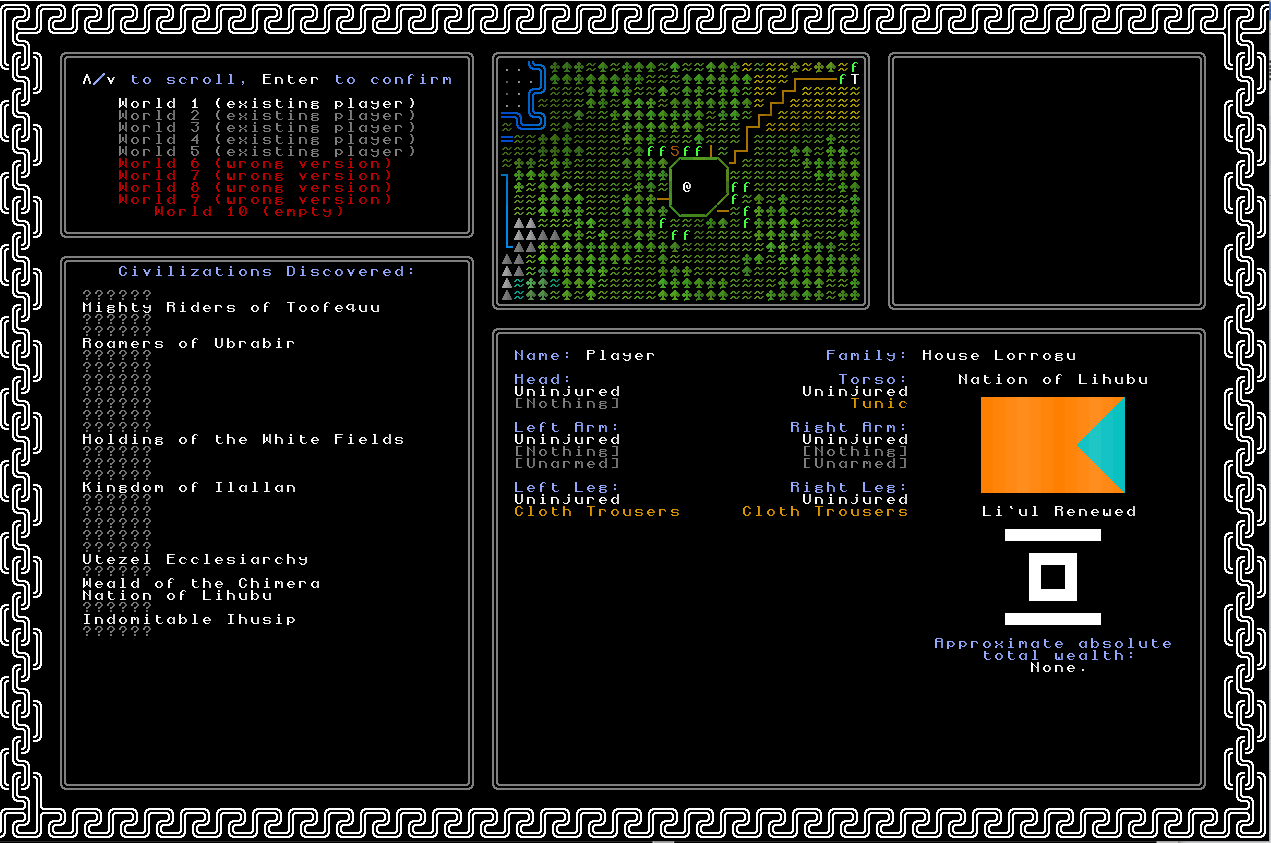
…to this…

…which is just a little clearer and a little more relevant, and leaves room for me in the future to return here and add a lot more relevant preview information to the loading screen. I’ll probably add things in the future about how much of each in-game currency you have, for instance, or the number of civilizations / religions discovered, and the like – but for now it’s just a little polish to clean up another old and out-dated in-game screen. The top-right box here will, later, display quest progress! (Which is indeed something we need to talk about in a near-ish future blog post…)
Bugs, etc
- Fixed a second, even more significant major freeze bug that could play out in various locations, again involving NPCs not being able to figure out somewhere to go, and getting stuck.
- That’s it! Not much of a month for bug-hunting and polishing, though hundreds (argh) remain on the to-do list.
What next?
As ever, check back in a few weeks for the next update! The next post will in fact by my short review list of games I played this year (I aim to post this early in Jan) and then after that we’ll be back to URRpdates. And as ever, please do leave a comment with your thoughts or questions, and if you enjoyed this post, please do think about sharing it around somewhere in the interwebs. Thanks everyone – see you in the new year!
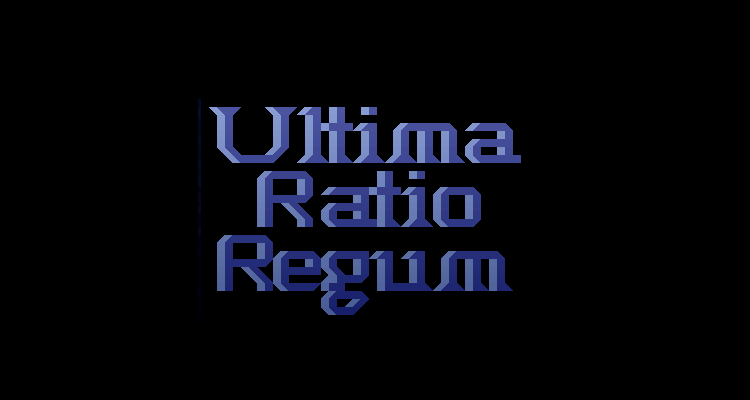
Very cool, cant wait to see more updates 😀
Thanks so much Colby!
Thanks for the update! The new relics look great, particularly the weird ones such as the puzzle box. And I’m intrigued by clockwork mechanisms being a possible civlisational choice in the game. As you noted, it opens up all sorts of interesting puzzle possiblities. For example, the brazen heads might speak to the player (as the “real” brazen heads were said to do), and maybe give you the next clue if you say the correct thing to them. Or maybe you could find a strange clockwork mechanism that requires a specific part to repair (perhaps a certain gear that you have to find elsewhere or commission from a specialist). Or maybe a riddle leads you to a clock to which you have to set the hands to a specific time in order to open a hidden panel or door. There are lots of possiblities! I look forward to seeing how it gets implemented.
Thanks crowbar! Really glad you like them. Yes, exactly, I think the brazen heads will be a nice way to play with the speech system (which I intend to rework anyway) and to interact in interesting ways with many other things, as well…
Mark, you’re awesome all around, I’d love you to adopt my children (don’t worry, they aren’t blonde), keep up!
Hahah, thank you, admirer!